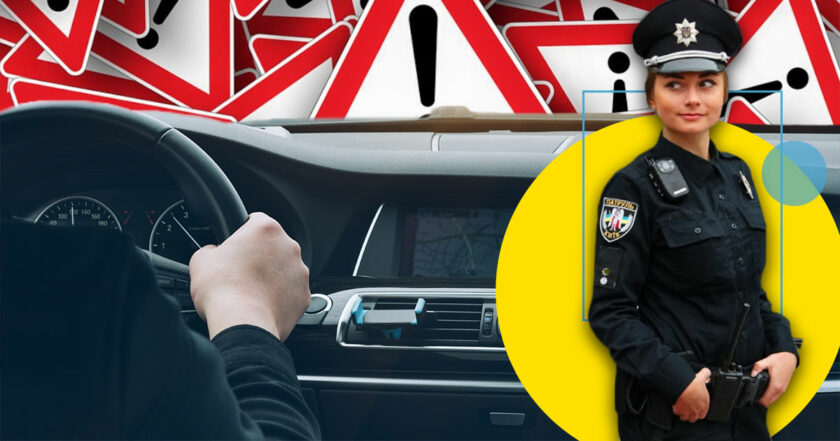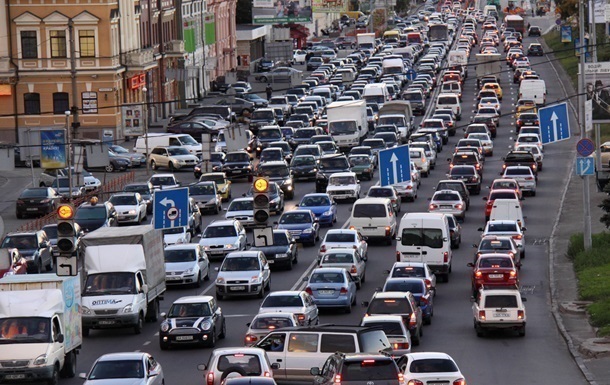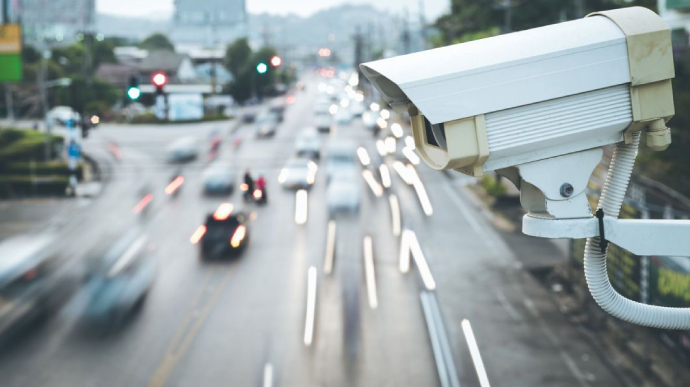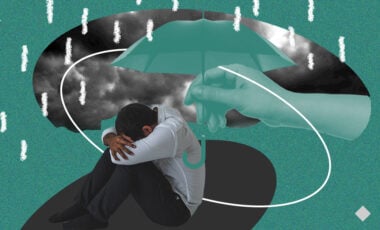Penalty points for drivers: how a new tool can save lives on Ukrainian roads

On average, at least 10 people die on the roads of Ukraine every day.
In response to the high death rate in road accidents, the Ministry of Internal Affairs launched an automatic system of photo-video recording of violations in June 2020, and in March 2021, the Verkhovna Rada increased fines for several traffic violations.
However, besides fines, another mechanism is working successfully in many European countries, a system of penalty points. Therefore, we'll consider how it works, attempts to implement it in Ukraine, and best European practices.
How the system of penalty points for traffic violations works
The system of penalty points provides for the accrual of points for violation of traffic rules. If a driver scores a certain number of points, his license is revoked. Or vice versa, points will be added for violations, and those who've exhausted their limit, lose the right to drive a car (temporarily or permanently).
Penalty points will be awarded for violations recorded both automatically and by patrol. The number of points in most European countries depends on the severity of the violation. If a person doesn't violate a certain period again, the penalty points are canceled (or vice versa, the written-off ones return). Accordingly, the main advantage of the system is that it encourages drivers to avoid repeated systematic violations.
Penalty points perform three functions:
- Warning: If the driver receives penalty points for driving at a red light, the next time they'll be more careful while driving. After all, for the second violation, they'll receive even more points and will be even closer to the withdrawal of a driver's license.
- Elimination: will some drivers continue to ignore traffic rules? Then the responsible body will deprive them of their driver's licenses for "breaking" penalty points, weeding out violators from our highways.
- Changing behavior: To regain their rights, the offender will have to re-take courses and pass exams, once again reminding themselves of the rules of the road.
For what exactly to punish with penalty points? According to the recommendations of the European Transport Commission, the minimum list of such violations should include:
- Speeding;
- Driving under the influence of alcohol and/or drugs;
- Violation of the rules of using seat belts and motorcycle helmets, improper use of child car seats;
- Use of telephones while driving;
- Driving at a red traffic light;
- Violation of priority rules;
- Violation of overtaking rules;
- Violation of the rules on the minimum distance between vehicles;
- Threat to pedestrians at crosswalks;
- Violation of the rules of passing railway crossings;
- Driving against the direction of traffic and the use of prohibited lanes;
- Escape from the scene of an accident and other dangerous behavior after the accident.
Penalty points in Ukraine
On paper, the system of fines in Ukraine has existed since 2015. However, it didn't fully begin operating, and last year, before the launch of the automatic photo-video recording system, the Verkhovna Rada abolished this system.
How was it supposed to work? Each driver received 150 points, and for each violation, they were deducted 50. This system meant that one person could violate traffic rules three times without receiving the actual penalty (for example, a fine). After all, only drivers who lost all points would be fined. Therefore, violators would receive a significant punishment much later.
The system of penalty points in Ukraine was to work for traffic violations, which would be recorded by cameras automatically. Such violations should have been:
- Exceeding the speed by more than 20 km/h;
- Violation of the requirements of road signs and road markings;
- Violation of the rules of cargo transportation, towing of vehicles, stops, parking, the passage of pedestrian crossings, failure to give priority to pedestrians at unregulated pedestrian crossings
- Violation of the ban on moving on sidewalks or footpaths;
- Violation of traffic rules at intersections, and stops of public vehicles;
- Violation of the rules of travel at a stoplight or a gesture of the regulator, violation of the rules of overtaking and oncoming travel, safe distance or interval, etc.
In the end, this version of the penalty point system turned out to be imperfect, that's why we never saw it in action on the roads of Ukraine.
"Warning talons" in Soviet times
However, the mechanism of penalty points is not a novelty for Ukrainians. In 1968, the USSR signed the Convention on Road Traffic, and soon the first uniform for the whole country traffic rules came into force.
Let's go back to the system of punishments: at the time, every driver had so-called "warning talons." If the owner was caught in violation, the traffic police inspector made marks in the coupon with a special composter. For example, "speeding," "oncoming lane," "violation of the rules of overtaking and maneuvering." Three such punctures meant: with the fourth, the driver will be deprived of a driver's license.
As early as 1991, punctures on "warning talons" were abolished, and the already familiar scoring system that survived the USSR appeared. Now the rights were taken away from the one who scored 15 penalty points. The inspectors had a special instruction with a description: how much does this or that violation "cost." In 1997, it was abandoned.
European experience
There's no single recipe for a penalty point system in Europe: different countries have their options. And there's one thing in common. In all countries whose experience we've studied, penalty points don't replace a fine but become an additional punishment.
In the UK, the driver's points are counted by the court, and they are kept on the "account" from 4 to 11 years, depending on the severity of the violation. A person who has received more than 12 penalty points in 3 years risks losing their driver's license here. For novice drivers (less than two years behind the wheel) the rules are stricter: their licenses will be taken away after 6 points.
For example, for speeding, the British get from 3 to 6 points, which remain valid for 4 years. Penalty points are also awarded for other violations, including driving under the influence of alcohol or ignoring road signs. More information here.
Austrian drivers can get up to 3 points. The first point is a warning. For the second one, the violator will get "educational activities": for example, the obligation to listen to driving lessons or attend a driving school. After the third point, the driver is deprived of the right to drive a vehicle.
Each offense from a special list (including drunk driving) costs the driver one point.
Beginner drivers in Bulgaria receive 26 points, and for offenses, they're deducted. Two years later, after exchanging a driver's license for a permanent one, drivers have 39 points.
For speeding by more than 50 km/h write off 12 penalty points; for using the phone while driving, it's 6. Other offenses punishable by loss of points can be found here.
In Hungary, drivers lose the right to drive a vehicle "accumulating" 18 penalty points. However, they have the opportunity to undergo voluntary re-certification and reduce the number of points.
For using the phone while driving, violating the rules of using child seats, motorcycle helmets, or belts, a Hungarian will receive 3 points; for speeding, it's 6-8 points, as well as for driving while intoxicated. The number of penalty points for other offenses can be found here.
In Latvia, a driver loses their license if they accumulate 16 penalty points. So, 1-5 points will be awarded for speeding; for using the phone while driving, 1 point; for not wearing a seat belt, 1 point. Accrued penalty points are stored for two years, regardless of the severity of the offense. Other offenses and fines, here.
The system of penalty points works in other European countries. For the most part, countries use a cumulative system, and the number of points awarded depends on the severity of the violation. The period of storage of points varies from 2 to 4 years, for novice drivers, their critical number is often less.
Efficiency
According to the European Transport Commission's data, in the first year after the introduction of the penalty point system, the number of road accidents decreased by 1.4% in Ireland (2002), 3.2% in Italy (2003), 14% in Denmark (2005) and 7.6% in Spain (2006) compared to the year before their introduction.
In France, in the year following the introduction of penalty points (1992), the number of road deaths was 7% lower than in the previous year.
Recommendations for Ukraine
The use of penalty points in European countries proves its effectiveness, but there are nuances.
In particular, we should bear in mind that the system can only be an additional sanction for traffic violations, which complements the fines. The penalty point system should also be applied to offenses identified by the WHO as major road risk factors. These include speeding, not wearing seat belts, motorcycle helmets, and child restraint systems, driving under the influence of alcohol, and using telephones while driving.
Other violations for which points may be accrued should be determined depending on their prevalence, the severity of the possible consequences, and the possibility of control.
In our opinion, violations for which drivers are awarded points should be recorded both by patrol and in automatic mode. The violator must receive both points and a fine.
Thus, the system of penalty points will change the behavior for the better, by punishing drivers for systematic violations. In addition, European practice shows that it is more effective to add points to drivers (which will be accumulated), instead of allowing them to break the rules by subtracting points from those automatically provided.
To save lives on Ukrainian roads, the use of penalty points should be regulated by law and become a mechanism that will prevent systematic violations of traffic rules.
Author: Yulia Diadiuk, analyst of the "For Safe Roads" Campaign






















































